The question "How do I lose weight?" gets typed into Google 150,000 or so times per month. The question "How do I lose weight fast?" gets asked even more. Unfortunately, the so-called answers that pop up are usually ridiculous "weight loss tips" that don't actually explain what a person needs to do in order to lose what they don't want and keep it off. What's worse, they often conflict with one another, creating more lasting confusion than lasting results.
The truth is far simpler. You can lose weight with any number of approaches you may have heard of: IIFYM, paleo, low-carb, vegetarian, ketogenic, or intermittent fasting. It's also possible to lose by doing nothing more than eating good food in a moderate amount.
Sustainable physique transformation happens by making healthy alterations to your diet, controlling your overall calories (or portions, to think of it another way), and exercising regularly. Any other approach may work in the short term, but will the results last? Don't hold your breath.
Here are Bodybuilding.com's best expert-backed recommendations and how to put them into action!
How To Lose Weight
- Focus on holding onto or adding muscle, not just burning fat.
- Follow a balanced nutrition plan with consistent eating habits, and track your calorie and protein intake, at least at first.
- Aim for 1-2 pounds of loss each week, but not much more.
- Exercise at least 60 minutes, 3-4 days per week, with some strength training in the mix.
- Perform cardio workouts or high-intensity interval training 2-3 days per week.
Now, let's discuss each point in more detail.
Weight Loss Basics
How Do I Lose Weight Without Losing Muscle?

One reason the answer to "How to lose weight?" is so messy is because it's actually the wrong question to ask!
Why? Because the number on the scale isn't describing one thing, it's describing two things: fat mass and fat-free mass. One of them is fair game for burning, and the other is something you really want to hold on to! So the question we should be asking is: "How do I lose fat while keeping, or increasing, fat-free mass?"
Your fat-free mass includes your muscles, organs, bones, and connective tissue. It also includes water weight. In other words, this is what would be left if you removed every single fat cell from your body.
Muscle mass is a major component of your fat-free mass, and it should weigh more than your fat mass. Furthermore, muscle mass has a huge positive impact on your metabolism or "metabolic rate" which is how many calories your body burns for energy. The more muscle mass you have, the more calories you burn, even when you're not exercising.
However, muscle is also the physical engine that powers you through activity, both in the gym and in life. It also helps to support and strengthen your joints, helping to improve balance and reduce the risk of injury. Holding onto it should be a high priority, especially when dieting. And no, not just for bodybuilders!
But let's talk about fat. It gets a bad rap, but your body needs it, too! There is an essential amount that each body needs to be healthy. That amount will vary between body type, age, sex, physical activity level, and fitness goal.
For the general population, the levels accepted as "healthy" are 21-32 percent for women and 8-19 percent for men.[1] That's a big range!
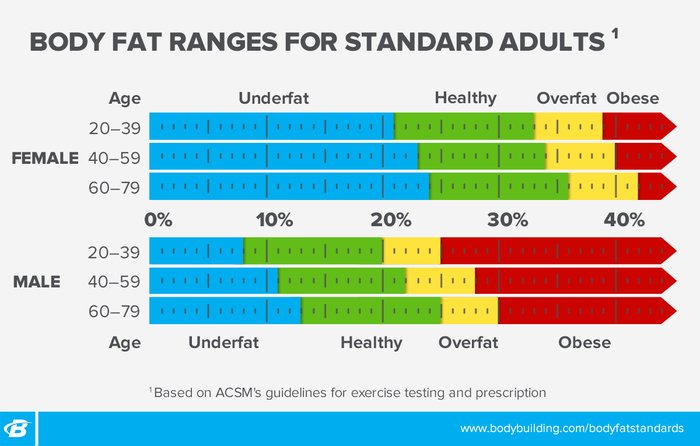
To be clear, you can be higher than the "healthy" range and still be healthy, or be lower than it and be unhealthy. But the range is a pretty good place to aim for. Spending most of your life at higher levels can put you at risk for weight-related health problems such as Type 2 diabetes, certain types of cancer, and cardiovascular disease. Lower percentages can be fine for brief periods of time, but they can be very difficult to maintain and aren't ideal for long-term health.
So, the big question is: How do you lose fat while holding on to muscle? Pauline Nordin, in her article "6 Ways to Reduce Body Fat While Increasing Muscle," recommends two big approaches:
- Train like you're trying to gain muscle, even when the goal is to lean out. That means using resistance training with either weights or your body weight.
- Utilize high-intensity interval training (HIIT), rather than simply putting in hours on the treadmill.
How Do I Eat For Weight Loss?

It's estimated that 45 million Americans go on a diet each year.[2] Given the current rates of obesity in this country, we can clearly see the success rate is low.
So, we want you to ditch the word "diet" entirely. Not only does that word have negative connotations, it also usually means you're only doing it for a short period of time, often focusing primarily on cutting calories as low as possible.
"This makes nutritionists like us want to shout from the rooftops that severe caloric restriction—aka dieting—is not the answer," explains registered dietician Susan Hewlings, Ph.D., in Bodybuilding.com's Foundations of Fitness Nutrition course. "Yes, cutting calories leads to weight loss. Plenty of diets cut calories seriously low, at least at first, and they get results. But not forever."
Once you stop getting those short-term results, continuing to undereat can leave you feeling awful, dragging through (or skipping) workouts, and setting yourself up for disappointment.
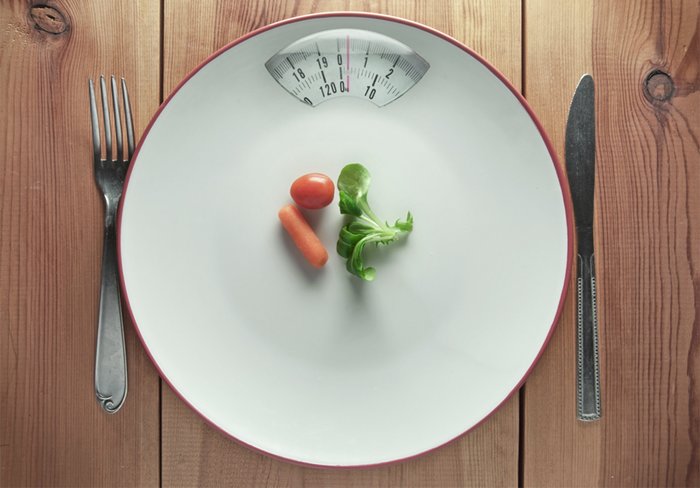
You need a more strategic approach than just "eat less." And it starts with how you think. Instead of thinking of food as something to limit, think of the food you put in your body as fuel for the healthy lifestyle that you're building!
For many people, the changes needed to get there aren't as big as they think, Hewlings says. You might get great results from simply:
- Replacing your usual high-calorie or sugary drink with zero-calorie liquids, or cutting back on the amount you drink.
- Creating a plan for the one "problem meal" each day where you are most likely to overeat or eat fast food rather than food packed with nutrients, like low-fat protein or whole grains.
"Maybe lunch is your weak spot because you leave the house in a rush and don't pack one, or because your workmates like to eat out. Maybe it's dinner, because you haven't eaten anything all day and you come home exhausted. Maybe breakfast is a sugar-bomb, and has been since you were a kid," Hewlings explains. "No matter which meal is the biggest problem, fixing it—and just it—can be a huge win. What's better, it requires far less work on your part than trying to fix every meal all at once. In many cases, it's as simple as prioritizing protein in a meal that was otherwise going to be empty calories."
Speaking of calories: yes, they definitely matter when your goal is to lose weight! But before you start cutting them, start by establishing where you're at right now, and simply tracking the way you eat now. Even if you just do it for a brief period of time, it can be a game-changer for the long term, explains registered dietician Paul Salter in the article "Want to Lose Fat? Before You Change a Single Thing, Do This."

Tracking your nutrition, Salter says, can help in a number of ways, including:
- Helping you see portions as decisions, not just something that gets served to you
- Revealing the "hidden calories" in your diet that you may not have seen otherwise
For some people, simply having that info is enough to make a meaningful change. But for many others, it can be helpful to compare it to a science-backed calorie recommendation, like you'll find in Bodybuilding.com's free calorie intake calculator.
That calculator will help you estimate how many calories you're burning during the day, both through normal body functions and other activities and exercise. Then, it'll give you a target caloric intake to aim for.
Why bother with numbers at all? Because many of us overestimate, underestimate, or flat-out lie about how much we weigh or exercise—even if we don't realize we're doing it. And even if you're honest with the calculator, it still doesn't mean the number will be 100 percent accurate! In fact, we can pretty much guarantee that it isn't. But it's a good place to start.
Once you've established your daily caloric target, keep tracking it to determine if you need to adjust your calorie intake slightly—not too much!—because you're not losing body fat.
How Do I Lose Weight Fast?

When we introduce a timeline into our fat-loss quest, things can quickly get tricky. "How do I lose weight for health?" is a very different question than "How do I lose belly fat in two weeks?" But television and the popularity of drastic stories sometimes alter our perception of what is realistic and sustainable.
To add to that, our "more is better" mentality often tells us that if removing 300 calories from our daily nutrition leads to a small amount of physique change, then imagine what taking out 600 or 1000 calories can do!
In reality, nothing could be further from the truth. Cutting your daily calorie intake too low (for example, under 1200 calories) brings lots of risk and little reward. Yes, there are healthy ways to lose fat faster, but they are most effective once you have the basic healthy behaviors mastered first.
Without those behaviors nailed down, if you're hungry all the time, are ruled by cravings, and have no energy, the chances of you maintaining your diet are minuscule. You may lose what you want, but as soon as you go back to eating your normal foods in the normal amounts, you'll likely regain all you've lost, and in some cases add on an extra few pounds.

Complicating things even more, research has found that repeated cycles of loss and gain end up making it harder to lose pounds and easier to put them back on, as Layne Norton, Ph.D., explains in the article "How Your Fat-Loss Diet Could Be Making You Fat." This "yo-yo" style of dieting may damage your metabolism, leading to a slower resting metabolic rate—meaning the amount of calories you burn during each day.[3]
It's far more likely you'll have success if it comes off slowly—particularly when it comes to stubborn belly fat. And your metabolism will end up working with you, not against you.
This doesn't mean that there's nothing to be gained by doing a fat-loss focused workout program that only lasts a few weeks, though. On the contrary, as fitness coach Sohee Lee writes, many researchers believe just three weeks is enough time to create lasting healthy habits.
The upshot for you? If you just think in terms of the next four weeks, or even better, six weeks, you can achieve a surprising amount—and set yourself up for even more long-term success! That's enough time to finish several of the most popular short-term fat-loss plans on Bodybuilding.com. These include:
- Alpha M's Tailored: 6 Weeks to Living Lean
- FYR: Hannah Eden's 30-Day Fitness Plan
- Jim Stoppani's 6-Week Shortcut to Shred
Any of the three can be the start of something great. And with a dual focus on nutrition and training, they can help you build a foundation that compounds over time.
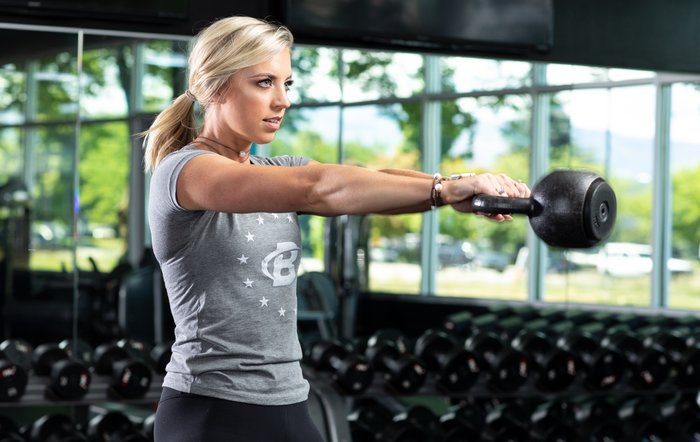
Following a short-term plan like these can also help give you a finite time to focus on getting your nutrition nailed down, and on determining what fat-loss supporting supplements will work for you. The best natural weight-loss supplements and weight-loss shakes can help you get the most out of training and see enough results during a program to keep you coming back for more.
To learn more about fat burners and weight-loss supplements, check out the article "The Complete Guide to Fat Burners."
How Fast Should I Lose Weight?

Put simply: As slowly as you can stand! In this regard, the scale can be your best friend or your worst enemy. Although your goal may be to see that number go down, the scale often doesn't accurately reflect what's going on in your body.
No matter your fitness level, the number on the scale can fluctuate by five or more pounds in a single day, depending on things like how much water you drink and food you eat. These changes don't mean that you've suddenly put on five permanent pounds of fat, though. For this reason, it's important to weigh yourself at the same time every day, and to take what's on the scale with a grain of salt.
When you do weigh yourself, remember that sustainable progress is usually fairly slow. Depending on how many calories you cut out of your diet and how much exercise you're getting, 1-2 pounds per week is a reasonable goal. Slow loss is always the best way to lose weight.
But sometimes, particularly if you're on a serious long-term physique transformation journey like "Possible Pat" Brocco, the scale might not budge for weeks or even months at a time, even if the mirror tells you that you're losing belly fat and adding muscle. That's OK. It's normal, in fact! Just know that over time, your consistent approach will eventually pay off. Slow loss is always the best choice. Think of it this way: The pounds didn't go on in just a few weeks, and you won't get them off in that time, either.
If that number on the scale sticks in your mind, though, it can be important to limit how often you step on it. It may also benefit you to take weekly progress photos. That way, you'll notice those small changes and feel motivated to keep going. It may also be helpful to get your body-fat percentage checked as you go, but it's not essential.
If you get really interested in strength training, you may find that the number on the scale goes up instead of down because your muscle mass is increasing. Remember, the scale doesn't always tell the whole story, so pay attention to the mirror, how you feel, and how you are performing in your workouts.
If you know you stress out about the number on the scale, stop using it! Plenty of people have success without it.
What Are The Best Macros For Weight Loss?

Technically, you could experience some success by only counting the number of fast-food hamburgers you eat each day and decreasing it by one. However, if you would like to experience lasting changes to your body, stay healthy, and increase your fitness, it can be helpful to look more deeply into how much of each macronutrient you're consuming.
There are three primary macronutrients (macros): carbohydrates, fat, and protein. Each of them is necessary for your health and performance, but there are endless ways to combine them. For carbohydrates alone, your options range from a very low-carb ketogenic diet where you eat next to no carbs and lots of fats, to carb cycling, where you change your carb intake day by day based on your training schedule.
These days it's pretty easy to do a quick internet search and find hundreds of different diet plans of varying complexity and extremity. But to start off, it's best for most people to keep a good ratio of all three macros in your nutrition plan and simply focus on quality and consistency.
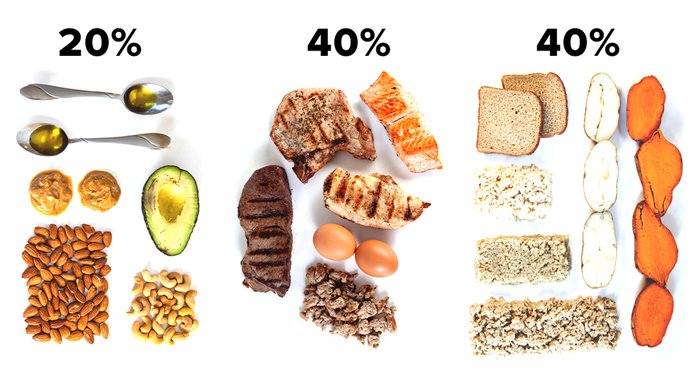
Most American diets are too heavy in fat and carbs and don't have enough protein. A tried-and-true ratio to start with to get these imbalances under control is:
- 20 percent of your calories from fat
- 40 percent from carbs
- 40 percent from protein
Use Bodybuilding.com's free macronutrient calculator to help you find what works best for you and your lifestyle. Over time, you can make alterations to this ratio depending on what foods you like, how your body responds, and your daily activity level.
For example, fitness model and trainer Obi Obadike says he ultimately landed on a 20/30/50 split for lasting leanness while still being able to perform in the gym. Other coaches and athletes have had success with 30/30/40, 25/35/40, or other ratios entirely.
Honestly, there's a lot of room for customization when it comes to fats and carbs, as long as you keep two factors more or less consistent: overall calories and daily protein intake. Those two factors are the numbers that studies have shown to be most connected to dieting success, explains registered dietician Susan Hewlings, Ph.D., in the video "How to Eat for Weight Loss" in Bodybuilding.com's Foundations of Fitness Nutrition course.
"Here's the thing: As long as calories—i.e., total portions—are under control and you're getting enough protein, [dietary systems] all work with about the same level of predictability," Hewlings says.
Having a balanced nutrition plan will not only help you lose weight, it will help you be able to maintain it for the long term. It may not sound sexy, but maintenance—i.e., not yo-yoing—is an essential part of losing fat and keeping it off.
What Is The Best Kind Of Exercise To Lose Weight?

Some people will have you believe that the only way to change your body is to leave yourself in a sweaty heap in the gym every day or tie yourself to the treadmill or elliptical for hours at a time. This doesn't have to be the case!
If you're new to the exercise world, it's OK to simply start off by filling your life with activities that you enjoy. It could be running, playing racquetball, hiking, or Sunday soccer with your friends. Whatever keeps you active for 60 minutes, 3-4 times per week, will help you feel good and experience some success.
But along with that kind of activity, it's a perfect time to include more structured training. In particular, it's important to focus on strength training and cardio, especially in the form of high-intensity interval training.
Strength training: What? Isn't lifting weights better for bodybuilding or getting huge, rather than losing fat? Believe it or not, it's an essential part of lasting weight control.
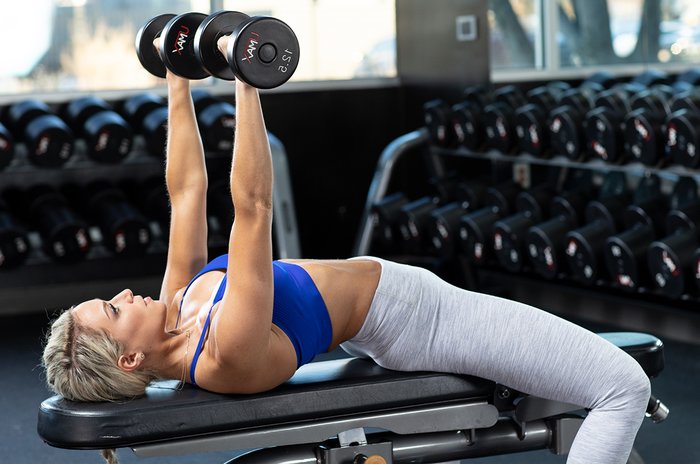
"It's understandable if you're hesitant to believe that, but here's why it works: Muscle tissue burns more calories than fat, even when you are just sitting in front of the TV," explains registered dietician Susan Hewlings, Ph.D., in Bodybuilding.com's Foundations of Fitness Nutrition video course. "The more you have, the more you'll be able to burn. It also gives you control over your health and appearance in a way that simple calorie control can't, and helps develop the strength and energy you need to fit more total activity in your life."
The benefits don't end there. Resistance training also has profound beneficial effects on your bones and joints and helps to prevent osteoporosis (loss in bone mineral density), sarcopenia (loss of muscle mass), and lower-back pain, assuming you use proper exercise form.[4]
Of course, there are plenty of different ways to approach strength training: fast-paced or slow, high reps or low, a bodybuilding-style body-part split or full body, just to name a few. There's really no wrong answer, and a lifter will cycle through all of them over the course of years. But researcher Jim Stoppani, Ph.D., suggests giving serious consideration to full-body training, particularly if fat loss is your goal.
Cardio and HIIT: The word "cardio" may bring to mind a treadmill with a TV set on top, but that's only one way to get it done.
High-intensity interval training, or HIIT, can also be a very effective weight-loss tool. It's pretty easy to incorporate into any fitness plan because it can be applied to a variety of settings and different types of equipment can be used.
Another positive: The best HIIT workout is often the simplest. For example, a popular introductory workout is to bike hard for 30 seconds, then rest for 30 seconds. Continue in this fashion for 10 minutes at first, building up over time to 20 minutes, with a light warm-up and cool-down of about 5 minutes of easy peddling on either end. Two or three brief sessions like this a week, along with some lifting, and you can achieve some surprising results!
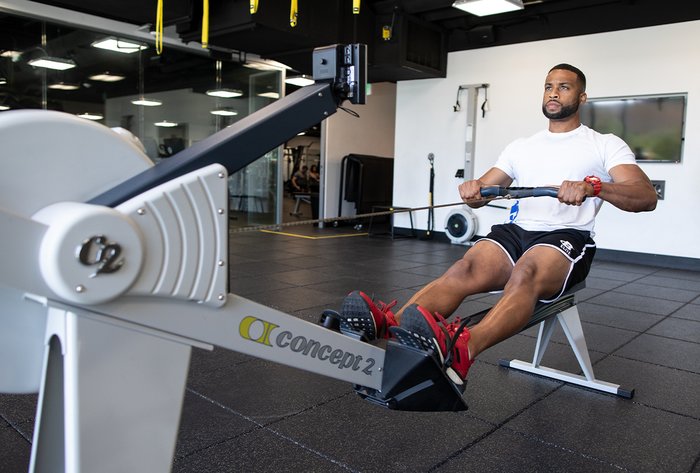
If you're looking for something more systematic, the most popular weight-loss programs in BodyFit share a common thread: They give your lungs and heart a calorie-burning challenge, but also lead you toward a healthy overall body composition and muscle growth.
The 5 Most Popular Bodybuilding.com BodyFit Elite Weight-Loss Programs
- Jim Stoppani's 6-Week Shortcut to Shred
- Lee Labrada's 12-Week Lean Body Trainer
- Transformed: 12 Weeks to Your Best Self
- Alpha M's Tailored: 6 Weeks to Living Lean
- FYR: Hannah Eden's 30-Day Fitness Plan
Your Attitude
Not every day is going to be a great day, and sure, you'll encounter the occasional hiccup or low point when it comes to your nutrition and training plan. Know that now and accept it. But if you stay dedicated to controlling portions and being a little more active, you'll slowly but surely see those pounds come off.
By far, the most important part of implementing healthier habits into your lifestyle is bettering your self-image and happiness. How you look is not nearly as important as how you feel. Maintain positivity and you'll see the changes you want to see!
References
- American College of Sports Medicine. (2013). ACSM's guidelines for exercise testing and prescription. Lippincott Williams & Wilkins.
- Nutrition & Weight Management. (n.d.). Retrieved from http://www.bmc.org/nutritionweight/services/weightmanagement.htm
- Blackburn, G. L., Wilson, G. T., Kanders, B. S., Stein, L. J., Lavin, P. T., Adler, J., & Brownell, K. D. (1989). Weight cycling: the experience of human dieters. The American Journal of Clinical Nutrition, 49(5), 1105-1109.
- Winett, R. A., & Carpinelli, R. N. (2001). Potential health-related benefits of resistance training. Preventive Medicine, 33(5), 503-513.


